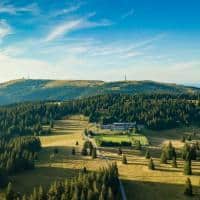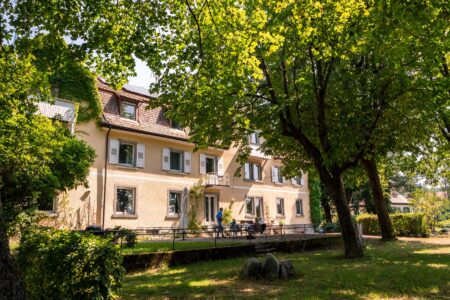Anyone who speaks of the Martinstor must mention the Schwabentor in the same breath. Both towers are closely connected because they once belonged to the Freiburg fortifications. This consisted of a total of five defense towers, which fitted flush into the then city wall and were connected to the battlements. The defunct gates include:
- Christoffel or Christophstor
- Lehen Gate
- Preachertor
The fortifications were also supplemented by smaller gates to the suburbs, which also no longer exist.
The Martinstor in modern times
The Martinstor is located in the southern old town. It was built in the 13th century and was first mentioned in documents in 1238. But the building no longer looks like it did in the early days. It has been rebuilt several times - at times it even served as a prison for defaulting debtors. Major changes only came at the end of the 19th century. Until 1969, the city side was adorned with a portrait of Saint Martin, hence the name. In the Middle Ages, the fortified tower was known as the Norsinger Tor, since the passage leads in the direction of the municipality of the same name. Incidentally, the entrance to the Freiburg market hall is in the side street (Martinsgässle).



The Martinstor: old walls in a new guise
At the end of the 19th century, the Swabian and Martinstors stood in the way of some contemporaries. In their opinion, the buildings should give way to the electric tram. Luckily that didn't happen. Citizens, business people and local politicians finally agreed on a compromise that had much more up its sleeve than just carrying out small conversion work. Architects and urban developers worked hard. They made the medieval fortified tower one of Freiburg's landmarks.
The Martinstor was originally 22 meters high. After the conversion work, it presented itself with a height of 66 meters. The situation was similar with the Schwabentor, the modernization was also extensive, it grew from 26 to 65 meters. Although the streets could not be widened, there was leeway with the arches. These were enlarged in favor of the electric tram.
In contrast to the original gate, the superstructure was built in the late Gothic style. Thus, the building fit skilfully into the cityscape, where Gothic architecture can also be found in other places. A prominent example provides the Freiburg Minster period.
Scenery without added value?
From today's perspective, it is difficult to understand why the city lords mobilized all the resources. A statement by the then mayor Otto Winterer (1888 to 1913) puts it in a nutshell: "Villages have roofs, cities have towers!" The construction of the surrounding houses changed over time - especially floors were added. Large gates stood out from the city silhouette and were visible from afar.
The topping-out ceremony was celebrated in the summer of 1901, the Martinstor stands on an area of 10 x 11 meters. The view from the upper floors is said to be fantastic. It makes sense to use the historic building as a city museum, for example, but the safety and fire protection regulations put a spanner in the works. The Martinstor is empty, unfortunately it can only be admired from the outside.
The Martinstor is a historic city gate in Freiburg im Breisgau
The exact year the Martinstor was built is not known, but it is believed to have been built in the second half of the 13th century.
The Martinstor was part of the medieval city wall of Freiburg and served as the entrance gate to the city.
Unfortunately, the Martinstor is not wheelchair accessible, as it has a steep staircase to the entrance.
The Martinstor was originally 22 meters high. After the conversion work around 1900, it was 66 meters high.
The name of the gate goes back to Saint Martin of Tours, who lived in France in the 4th century and was revered as the patron saint of travelers and soldiers.













